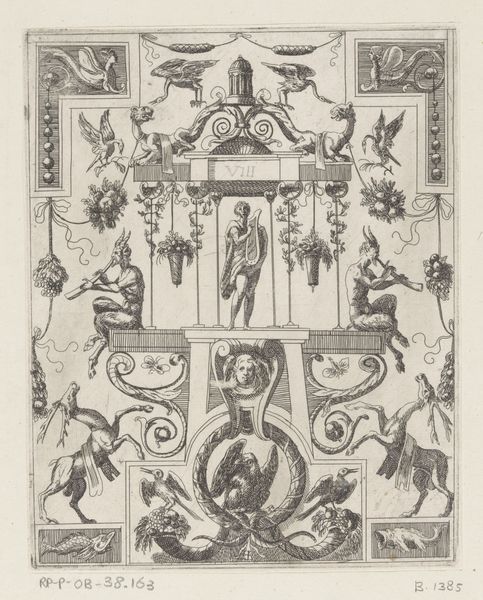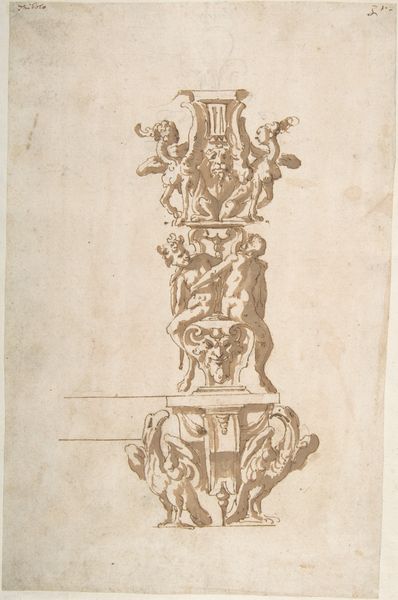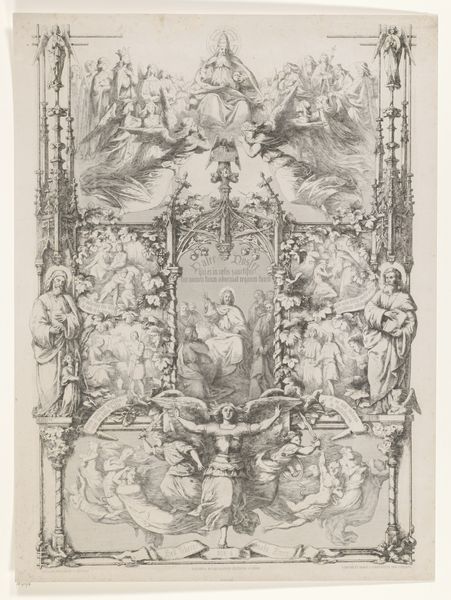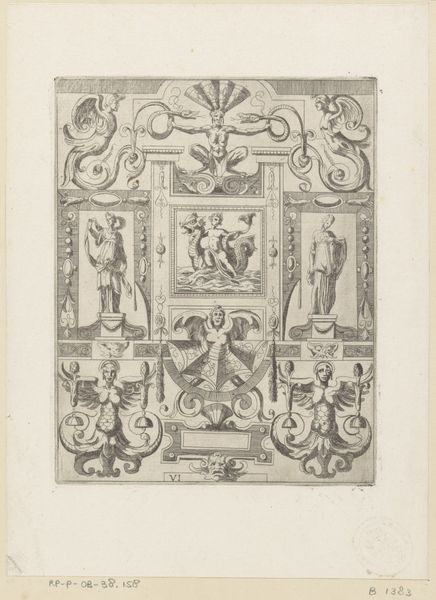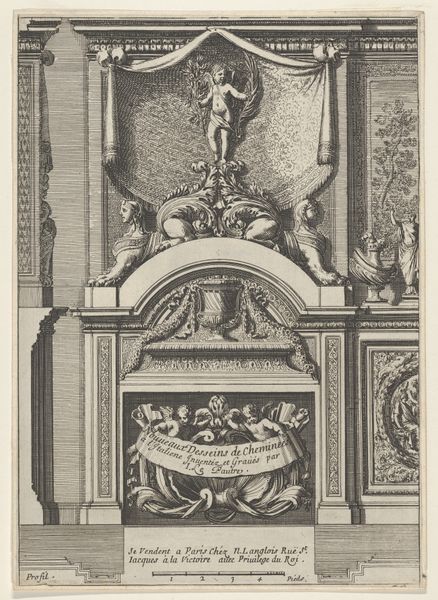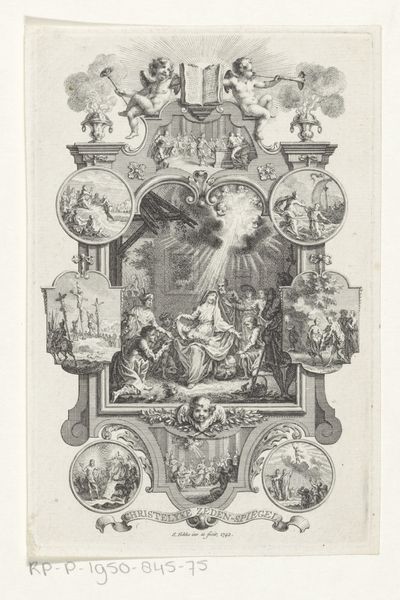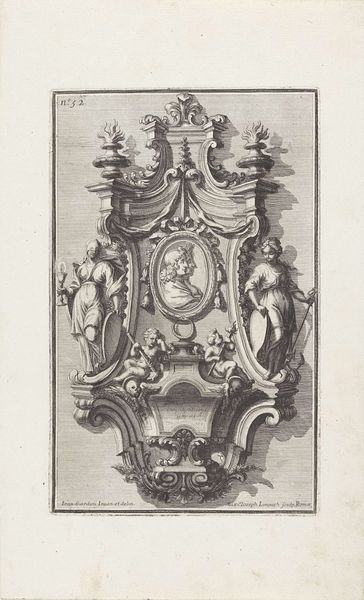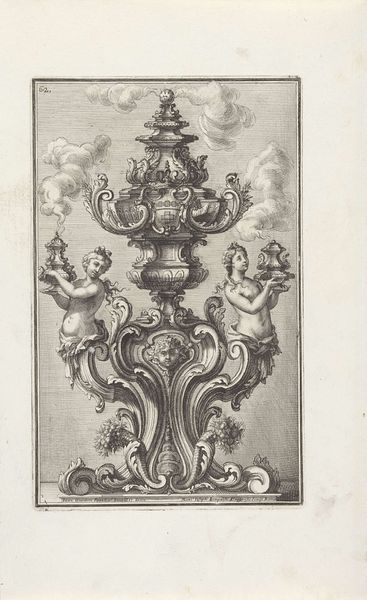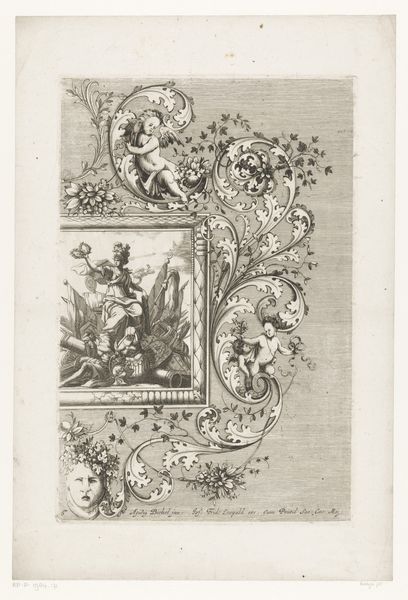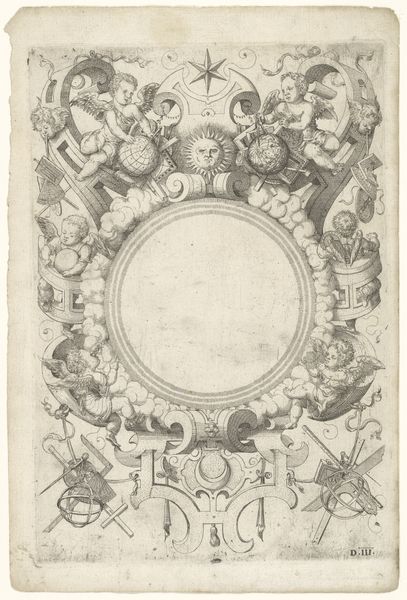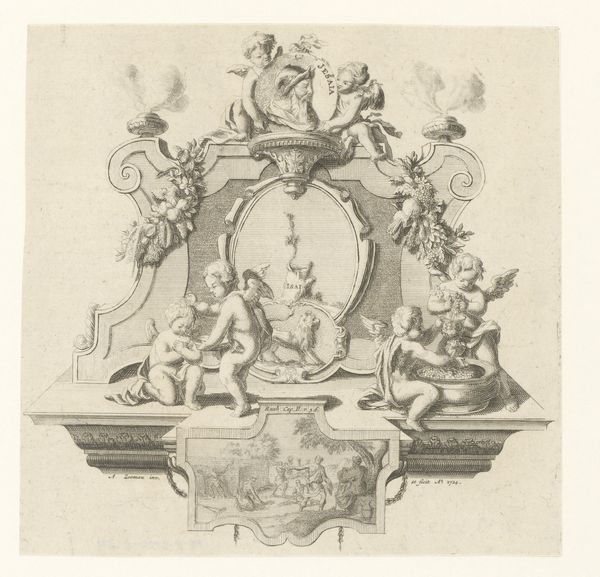
print, ink, engraving
#
baroque
# print
#
figuration
#
ink
#
engraving
Dimensions: height 420 mm, width 179 mm
Copyright: Rijks Museum: Open Domain
Editor: Here we have Giacomo Laurenziani’s “Monstrans met twee engelen,” or Monstrance with Two Angels, from 1637, an ink engraving. It has such intricate detail and a rather formal, even theatrical, air. What can you tell me about it? Curator: Well, the very subject matter, a monstrance, gives us a key into its socio-cultural role. Monstrances are, of course, sacred vessels used in the Catholic Church to display the Eucharist. The fact that Laurenziani produced this print in 1637 is quite telling. The Counter-Reformation was in full swing, and the Catholic Church was actively seeking to reassert its authority after the rise of Protestantism. Editor: So, you’re saying this print wasn't just decorative? Curator: Exactly. Prints like this, circulating widely, served as visual propaganda. Consider the Baroque style—the drama, the ornamentation. The angels themselves are idealized and positioned to exalt the monstrance. Do you think the inclusion of angels served to evoke emotion and devotion? Editor: I can see that! The delicate details, almost lace-like, are eye-catching, it would draw people in. And making it a print, distributing the image more widely… it makes a lot of sense. Curator: Precisely. This print highlights how art was then so intricately tied to religious and political power structures. Its purpose extended far beyond mere aesthetics. The very act of displaying and distributing such an image contributed to the visual culture meant to solidify and proliferate a very specific ideology. Editor: I never really considered prints as being tools of influence like that. Thinking about it, though, I suppose that makes perfect sense. This was more than an image; it was an assertion of power! Curator: Exactly. Analyzing it through that lens offers so much.
Comments
No comments
Be the first to comment and join the conversation on the ultimate creative platform.

